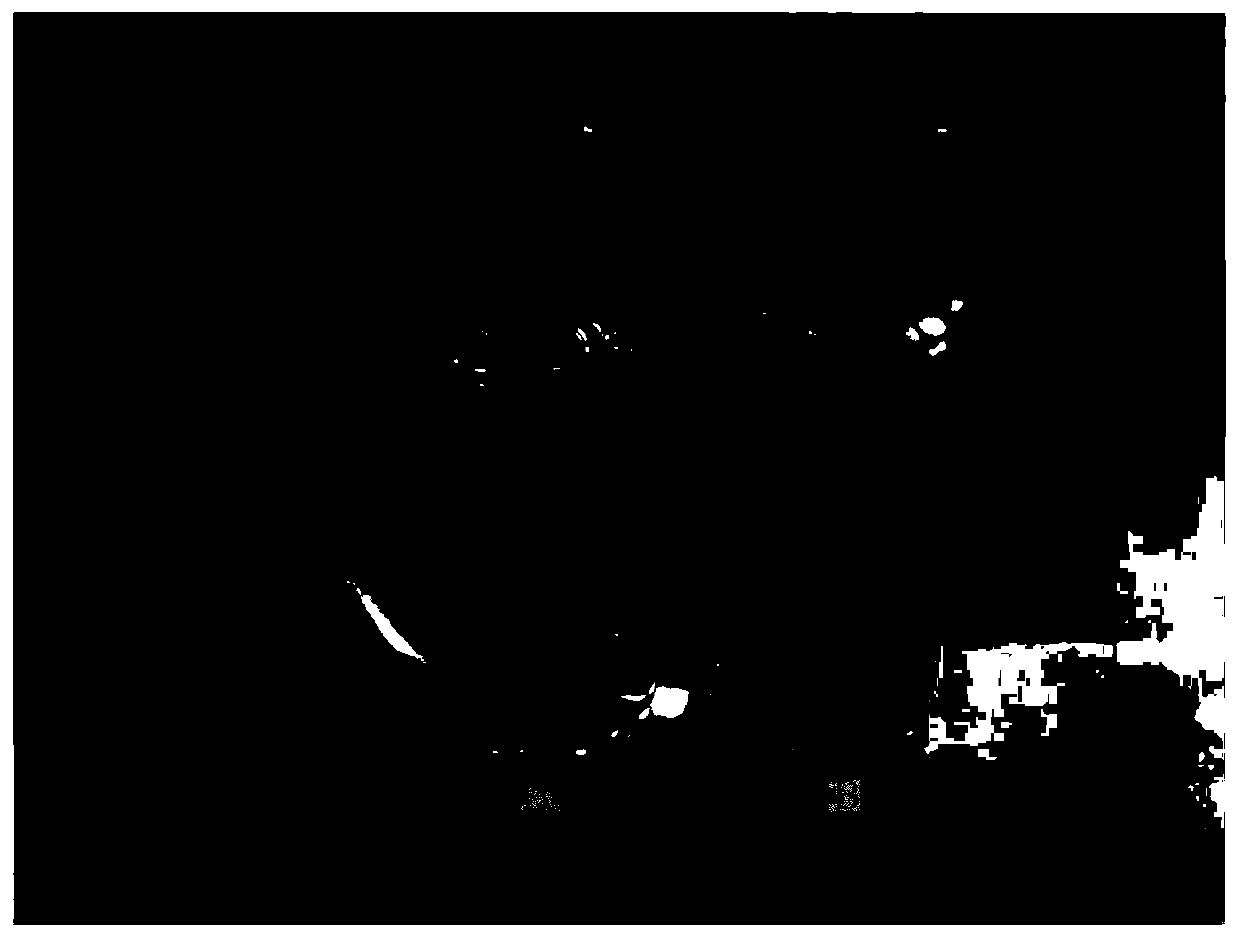Method for synchronously preparing high-purity cellulose and lignin nano-particles from wood fibers and application of high-purity cellulose and lignin nano-particles
A technology of wood fiber and nano particles, which is applied in fiber raw material processing, textile and paper making, pulping with acid salt/acid anhydride, etc. , low boiling point, low cost effect
- Summary
- Abstract
- Description
- Claims
- Application Information
AI Technical Summary
Problems solved by technology
Method used
Image
Examples
Embodiment 1
[0046] (1) after furfural slag (purchasing the waste residue after producing furfural from Puyang furfural enterprise in Henan Province, which contains 29.56% cellulose and 62.97% lignin) is cleaned with ultrapure water and crosses 60 mesh sieves, in 60 °C to constant weight.
[0047] (2) The furfural slag treated in step (1) is added to the mixed solution containing formic acid-hydrogen peroxide according to the solid-to-liquid ratio (g / mL) of 1:10 (that is, the formic acid solution and the mass fraction of 95% 35% to 37% hydrogen peroxide solution mixed at a volume ratio of 8:2) in a three-necked flask, reacted at 80°C for 3h. After the reaction was completed, the mixed solution of formic acid and hydrogen peroxide was separated by filtration, and the organic acid-peroxide mixed solution with the same volume and ratio as the first addition was added again, and reacted at 90° C. for 3 hours. After the reaction is completed, the solid and the liquid are separated by filtratio...
Embodiment 2
[0051] (1) after furfural slag (purchasing the waste residue after producing furfural from Puyang furfural enterprise in Henan Province, which contains 29.56% cellulose and 62.97% lignin) is cleaned with ultrapure water and crosses 60 mesh sieves, in 60 °C to constant weight.
[0052] (2) Add the furfural slag treated in step (1) to the mixed solution containing acetic acid-hydrogen peroxide (that is, the acetic acid solution with a mass fraction of 36% to 38%) according to the solid-to-liquid ratio (g / mL) of 1:10. and a hydrogen peroxide solution with a mass fraction of 35% to 37% in a volume ratio of 7:3) in a three-necked flask for reaction at 60° C. for 4 h. After the reaction was completed, the mixed solution of organic acid and peroxide was separated by filtration, and the same volume and ratio of organic acid-peroxide mixed solution as the first addition was added again, and the reaction was carried out at 80° C. for 4 hours. After the reaction is completed, the solid ...
Embodiment 3
[0056] (1) After crushing the corn cob through a 60-mesh sieve, wash it with ultrapure water, and dry it at 60°C until it reaches a constant weight.
[0057] (2) Add the corn cob treated in step (1) to the mixed solution containing formic acid-hydrogen peroxide (that is, the formic acid solution with a mass fraction of 95% and the mass fraction 35% to 37% hydrogen peroxide solution mixed in a volume ratio of 8:2) in a three-necked flask, reacted at 60°C for 4h. After the reaction was completed, the mixed solution of organic acid and peroxide was separated by filtration, and the same volume and proportion of organic acid-peroxide mixed solution as the first addition was added again, and the reaction was carried out at 90° C. for 2 h. After the reaction is completed, the solid and liquid are separated by filtration, the solid is high-purity cellulose, and the liquid is a mixed solution containing lignin nanoparticles.
[0058] (3) Add the organic acid-peroxide mixed solution ob...
PUM
| Property | Measurement | Unit |
|---|---|---|
| particle size | aaaaa | aaaaa |
| particle size | aaaaa | aaaaa |
| particle size | aaaaa | aaaaa |
Abstract
Description
Claims
Application Information
 Login to View More
Login to View More - R&D
- Intellectual Property
- Life Sciences
- Materials
- Tech Scout
- Unparalleled Data Quality
- Higher Quality Content
- 60% Fewer Hallucinations
Browse by: Latest US Patents, China's latest patents, Technical Efficacy Thesaurus, Application Domain, Technology Topic, Popular Technical Reports.
© 2025 PatSnap. All rights reserved.Legal|Privacy policy|Modern Slavery Act Transparency Statement|Sitemap|About US| Contact US: help@patsnap.com



